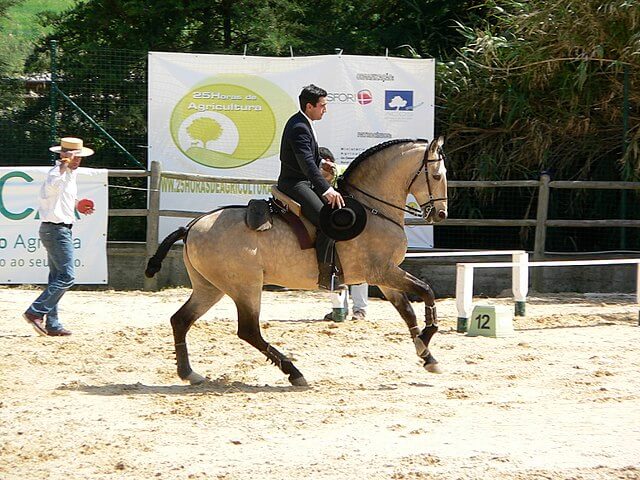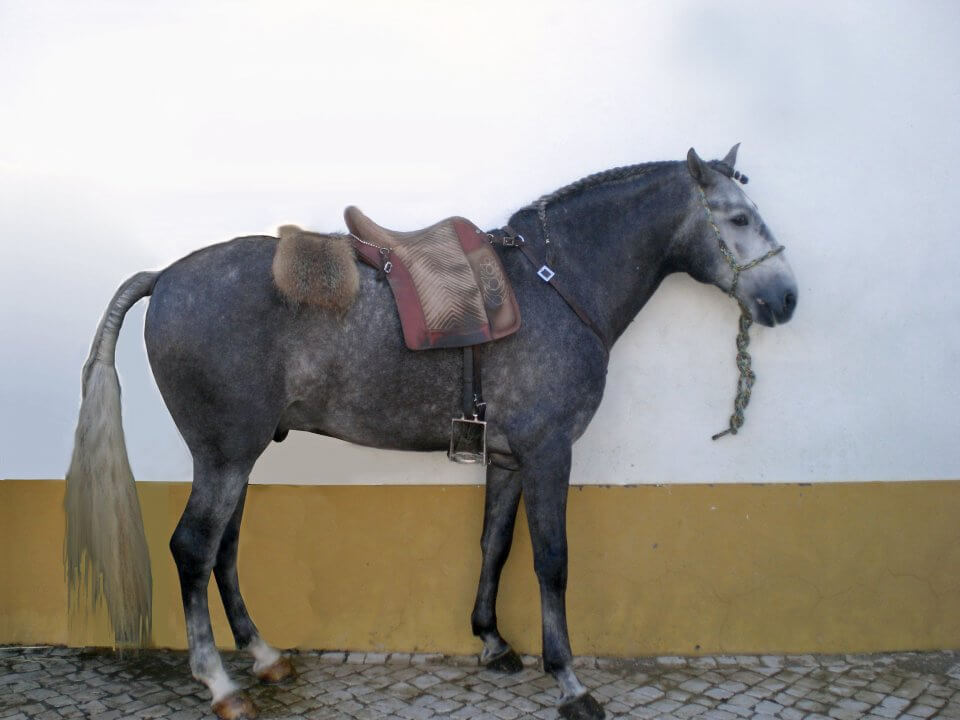
The skills required come from jumping, barrel racing, dressage, trail riding, and mounted games, to name a few. It’s a mash of many different disciplines, allowing riders from different disciplines to play to their strengths. It’s Working Equitation, one of the fastest growing equestrian disciplines.
Working Equitation is a relatively new discipline, originating in Portugal, Spain, France and Italy in the 1990’s. The first competition was held in 1996. It is based on the traditional riding that would have been used in the field, working cattle or ranch work. Because these countries also have heavy dressage roots, it’s also based in dressage. So, it’s field work combined with dressage. If you thought your dressage needed some major spicing up, this could be for you. Or alternatively, if you thought your trail riding was much too relaxed, well, this could also be for you!
The information presented here is based off of the USA version of Working Equitation according to USA Working Equitation. There is also an International Working Equitation Organization, and rules may differ according to region.
The Basics
The competitions are comprised of four parts: dressage, ease of handling, speed, and cattle work. Don’t get nervous about working cattle – despite what this sport is based on, it’s actually optional, and sometimes not even offered. If you’ve ever seen videos of it, you’ve likely seen the speed phase, definitely the most popular part.
Since this is based on classical riding, much of the language revolves around dressage terms. Collection, connection, elasticity, and more, are all terms that the dressage rider will already be familiar with. If you’re new to dressage, don’t be intimidated, at the lowest level, Level 1, the goal is mostly to introduce you and the horse to the basic ideas, and get started. In the US, the levels go up to Level 6, and internationally, the top level is called, “Master.”
Even though this discipline is based on the traditional riding in Europe, it’s actually not strict on what you wear. There’s hardly any tack or attire restrictions or guidelines at this point (it looks like they may adapt some in the future). This makes it very easy to jump into – you come as you are! English, western, maybe even sidesaddle, I don’t know how you like to ride, but you can try this with whatever you usually do. If you advance up the levels, eventually you have to ride with just one hand, but in the lower levels it is not required – although you might end up having to do it anyway to hold objects.
Even gaited horses are welcome – the rules say that for gaited horses, just replace the trot with their gait, referred to as the “Intermediate Gait.”

Dressage
If you are familiar with how dressage tests work, you’ll understand this part. There’s slight modifications that are meant to show “ease of handling,” but otherwise, it’s dressage. If you haven’t done a dressage test before, you are given your test in advance, you practice it at home, and then you do it at the show. The judge will score each movement and take notes to provide you with feedback.
The test are not the same as the ones you might be used to in dressage, so don’t try to use the same one you used in your last eventing competition. They are unique to WE, so take a look in advance, and practice.
But, good news! After practicing the skills required for the other phases, this phase should seem pretty simple and straightforward!
Ease of Handling
This is the phase meant to show the skills that would have been needed, had you been working cattle on a rustic European ranch, just like in all those dreams you kept having (maybe just me?). You might open a gate, cross a bridge, weave around trees, or raise a glass to give a toast to your fellow ranch workers (I assume? I don’t know why else this is part of it!). There’s a few obstacles that are present at every competition but there’s also unique ones that might be only in specific regions.
There are 10-12 obstacles in the course, and you choose your own route through them. You can plan your own strategy of which to tackle first, and work to your horse’s strengths. Some obstacles have options, allowing you to choose between a harder or easier option. Walk the course first, and become a master strategist.
It is scored similar to a dressage test, with the judges scoring each obstacle and writing their feedback on a sheet for you to review.
Speed
The speed run is likely what everyone imagines working equitation is. It is nearly the same course as Ease of Handling, but this time, it is timed. The speed run is meant to be fast, but the speed must be balanced with finesse. Moving too fast can make your turns wide, and knocking down obstacles deducts point. There’s no speed class in introductory classes, though, which makes it less intimidating to those new to the sport.
The purpose of this phase is to show that a horse can quickly move to do task required for cattle work, but come back quickly to the rider. Keeping the horse controlled, but fast, is the goal.
Cattle Sorting
The completely optional, may not even be offered trial due to lack of facilities. BUT this is an important trial because it’s actually what the other trials are based on – the ability to work cattle.
In this trial, a member of a team crosses a line to gather up a specific numbered cattle, and bring it to a pen. The other team members work to help bring the chosen cow to the pen, while keeping the other cows out.
Each rider gets 3 minutes to get their cow, with penalties applied for going over.
Getting Involved
Are you interested in trying it out? With the rising interest in the sport, events are popping up across the country. It’s a great time to get started!
USAWE has a list of affiliate organizations, so you can find one in your specific area. From there, from the group closest to you, and see when their next event is. You could also find a trainer, or even just try to set up on your own. The dressage tests are freely available, and some of the obstacles you can make. Some might require you to be a bit more handy, though.
I think it looks like tons of fun, and I want to try it with Stu. Follow along to see how we do with it!
Have you tried Working Equitation? Let me know in the comments!

Putting the Pieces Together - An Equestrian Life
[…] of my inspiration and what motivates me to keep going is the thought of one day doing working equitation. It looks like so much fun, and I greatly admire the training of those horses. At this point, it […]
Working on My Spin Moves - An Equestrian Life
[…] about working equitation really inspired me. I originally got Stu thinking I would do hunters, and specifically hunter […]